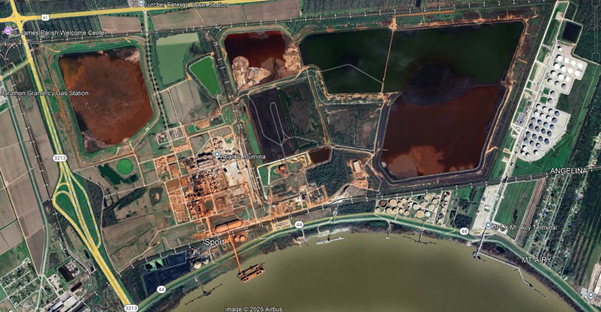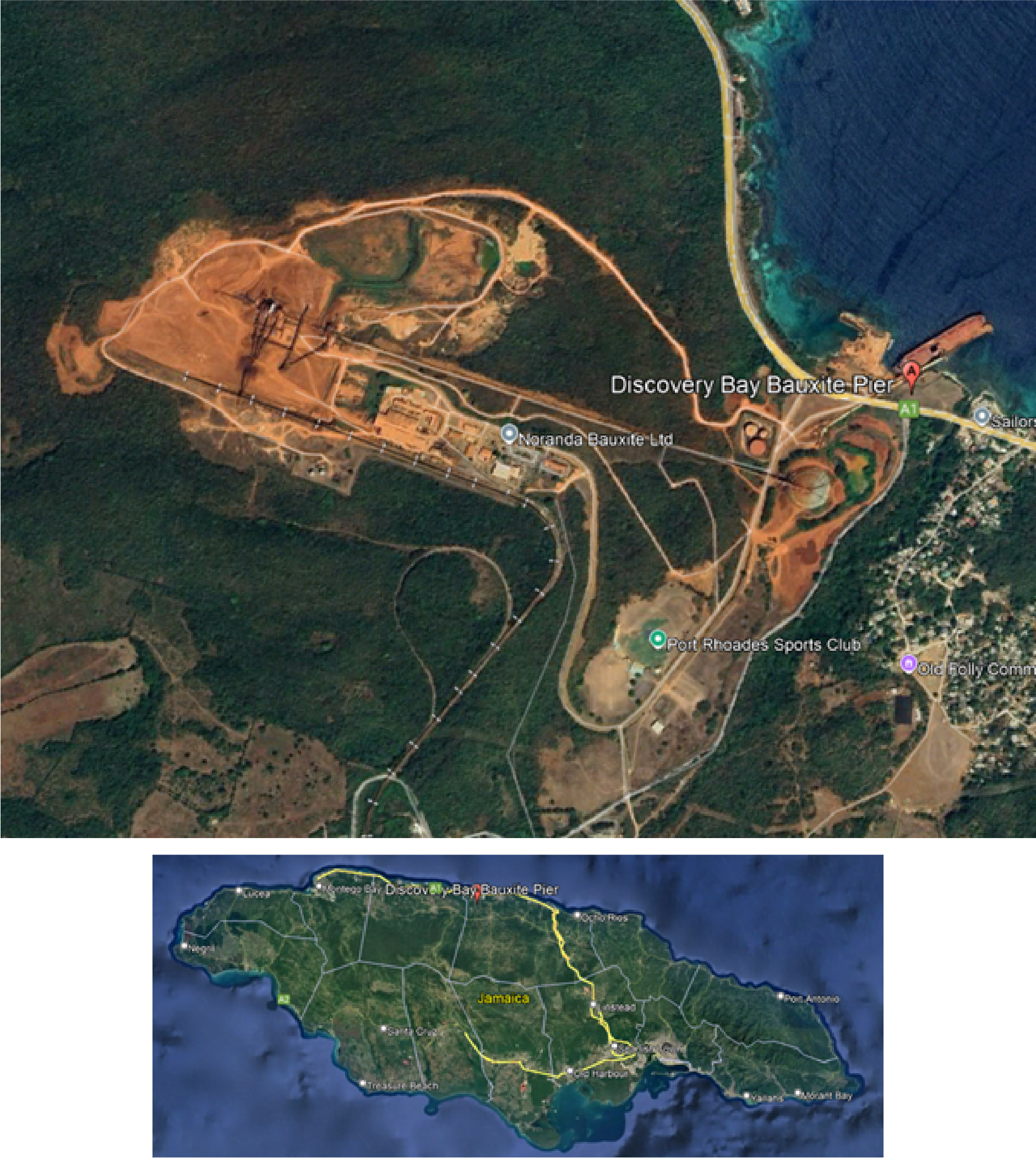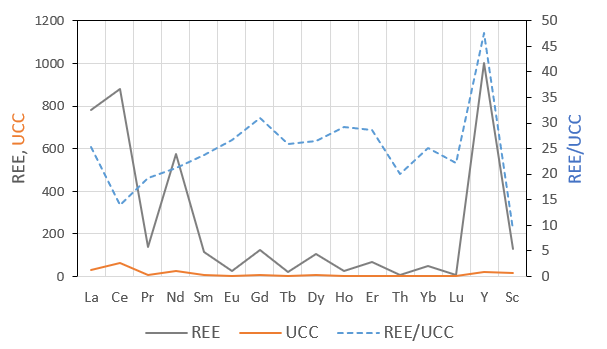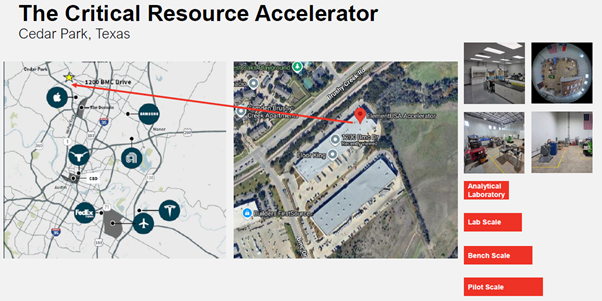ElementUSA Converting Bauxite Residue to Rare Earth Elements
Episode released on September 24, 2025
Episode recorded on July 28, 2025

Chris Young discusses Element USAs goal to converting waste feedstocks to critical minerals and REEs
Chris Young is the Chief Strategy Officer at ElementUSA.
Highlights:
- ElementUSA was formed in 2020 to evaluate various waste feedstocks to supply Critical Minerals, including Rare Earth Elements, within the US.
- Extracting critical minerals from waste has a lot of advantages relative to traditional mining:
- More rapid timeline to market (2 – 3 yr vs 7 – 15 yr)
- Reduced permitting requirements
- CAPEX much lower than mining
- Lower costs
- Greatly improved social license to operate
- Potential environmental benefits
Bauxite Residue or Red Mud
- ElementUSA started with a focus on bauxite residue or red mud, which are tailings from alumina processing at at the Gramercy site in Louisiana, adjacent to the Mississippi River (Fig. 1).
- For each ton of alumina produced from bauxite, there is ~ 1 to 1.5 tons of bauxite residue generated.
- ElementUSA has ~ 30 million tons of dry bauxite residue under contract at the Gramercy site (link), stored in five ponds at the site (Fig. 1).
- The Gramercy alumina plant is run by Atalco (Atlantic Alumina) and was previously owned by Noranda Alumina and Kaiser Aluminum. It is the last operating alumina refinery in the US. The refinery was first commissioned in 1957. Kaiser Aluminum built the bauxite export operation in Jamacia along with the Gramercy facility for refining alumina in the US.
- The refinery generates smelter grade alumina (SGA) and the bauxite is sourced from bauxite mines in north coast of Jamaica and transported from Discovery Bay, Jamaica (Fig. 2) to the Gramercy, Louisiana refinery.
- Limited sample analyses indicates that REE concentrations are very high, ~3,000 - 4,000 ppm total REE, including Y and Sc. REE concentrations in a representative sample is shown in Fig 3, with REE concentrations averaging ~ 25× concentrations in the Upper Continental Crust. What is unusual is that all REEs are highly elevated related to crustal concentrations.
- Alumina is extracted from bauxite using the Bayer process by adding concentrated sodium hydroxide and the resultant bauxite residue has a very high pH (~ 11 – 13).
- The bauxite residue is stored in BR storage areas (also called mud lakes); however, Atalco is now dry stacking or filter pressing over half of their production at the Gramercy site. The dry stacking allows them to mound the bauxite residue. The BR storage areas are enclosed in levees. They are up to 40 ft deep. About half of the bauxite residue is water in the impoundments.
- The Burnside facility is another facility in Louisiana that contains bauxite residue.
- There are similar facilities in Texas, the Copano site near Corpus Christi and the Point Comfort site, both operated by Alcoa and also sourced bauxite from Jamaica.
- The lifespan of the Gramercy facility is projected to be ~ 30 yr, with ~ 30 million tons (Mt) of dried bauxite residue stored there and using ~ 1 M tons/yr to extract REEs and critical minerals. If Atalco continues producing alumina (~ 1 Mt/yr) then the lifespan of the facility will be extended accordingly.
REE Concentrations and Zero Solid Waste
- The bauxite residue at the Gramercy site contains about 50% iron and metallic iron will be extracted using a carbo-thermal reduction process. Iron is used in the steel industry and the US currently imports large volumes of pig iron for steel manufacturing.
- High levels of scandium (Sc) will be very valuable considering the high prices for scandium (up to $3000/kg) and importance for scandium alumina alloys. Use of Sc reduces the weight of a Boeing 747 by 15% resulting in $9 million savings per year in fuel costs. This is very important for the aerospace industry.
- ElementUSA assumes 50% extractabilty for most REEs. Extractability of Sc is estimated to be 30% using a carbonization process.
- ElementUSA has established a Critical Resource Accelerator in Cedar Park, just north of Austin that consists of 30,000 ft2 space (Fig. 4). The CRA is designed to conduct mineral characterization, and lab, bench, and pilot testing of different separation and extraction procedures using various feedstocks.
- A variety of feedstocks are being considered, including bauxite residue, coal ash from power plants, copper tailings, and phsyphogypsum etc.
- ElementUSA wills serve as a bridge between companies who have feedstocks and companies with technologies to characterize and extract CMs from these feedstocks.
- The work at Gramercy is designed to result in zero solid waste. The iron will be processed and feed into the steel industry. Critical minerals and rare earths will be extracted for different industries.
- The residue will feed into the cement and concrete markets. The cement market in the US is ~ 100 million tons and the concrete market is ~ 400 million tons.
- The residue may also serve the construction industry in Louisiana where there are limited aggregates.
- The future of the Gramercy site is likely new industries after the bauxite residue has been exhausted.
- Coproducts will be very important to stabilize the market and deal with the volatility of the REE pricing.
- Dept. of Defense Defense Logistics Agency recently provided a floor price for Mountain Pass (MP) Materials in Dallas (TX) for Pr and Nd which are used for permanent magnets.
- China imposed export controls on seven specific REEs (Sm, Ga, Tb, Dy, LU, Sc and Y), requiring exporters to obtain special licenses. These REEs are critical for defense, energy, and the automotive industry.
- The Gramercy site is adjacent to the Mississippi River and represents a potential source of contaminants to this water body. Removing the bauxite residue would represent a great environmental benefit at this site.



